There is little information in Costa da Morte about this long period in history that covers about one thousand years (5th-15th c. CE) due to a lack of existing documentation and archaeological excavations.
Remains from the Suebian and Visigothic periods were found in some places where Roman remains were also found, such as Moraime (Muxía), Tines (Vimianzo), Cores (Ponteceso) and Cances (Carballo), but they were hardly studied and little information the sites was obtained. If more research work were carried out, the number of Germanic sites in the area would greatly increase.
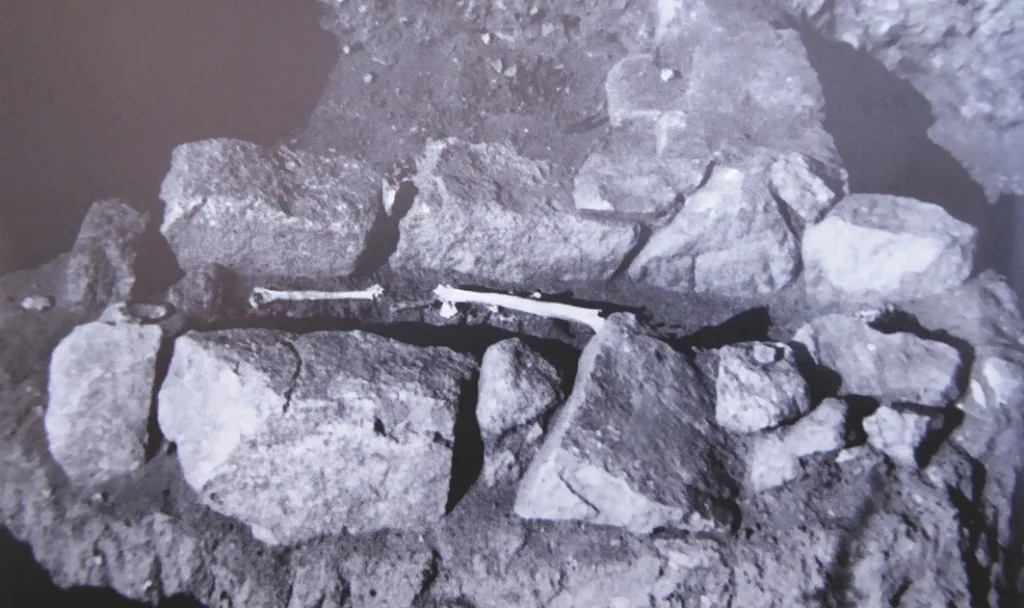
Many historians state that Costa da Morte was scarcely populated in the Early Middle Ages because of its peripheral position and its distance from important population centres of political and ecclesiastical power. This belief goes against the fact that the territory was heavily populated in previous periods, such as the Megalithic and Castro cultures, if the large number of archaeological finds from these periods is anything to go by. The lack of historical documentation that might provide more details about this early period of the Middle Ages makes it impossible to know whether human occupation at that time was greater than it is currently believed.
According to the Parrochiale Suevum (572), the lands that made up Costa da Morte were included in the large districts and parishes of Bregantinos, Coporos and Célticos, since no mention is made of the historical regions of Bergantiños, Soneira and Nemancos.
In the document of Tructinus (868) only two churches are mentioned in the entire region: San Saturnino de Vimianzo, in Soneira, and Santa Eulalia de Dumbría, in Nemancos, both of which belonged in this period to the diocese of Iria Flavia. Besides the ecclesiastical divisions, the Asturian-Galician-Leonese monarchy shared out the territory in comitatus (counties), where a count exercised military, judicial, fiscal and governmental powers in the king’s name. In the 11th century, the region was divided into five counties: Carnota, Célticos, Nemancos, Soneira and Bergantiños, which corresponded to the parishes of Entines, Célticos, Nemancos, Soneira, Seaia and Bergantiños, later transformed into archpriestships after the reforms of 1177 made by the archbishop of Santiago, Pedro III. The first five formed the arch-deanery of Trastámara, which was based in the town of Cee.
There is no information about the existence of any noble families in Costa da Morte until the end of the 11th c., when the first details appear about the Traba family, which may received their name from the parish of Santiago de Traba (Laxe), where they may have had fortified settlements on the heights of the Torre da Moa.
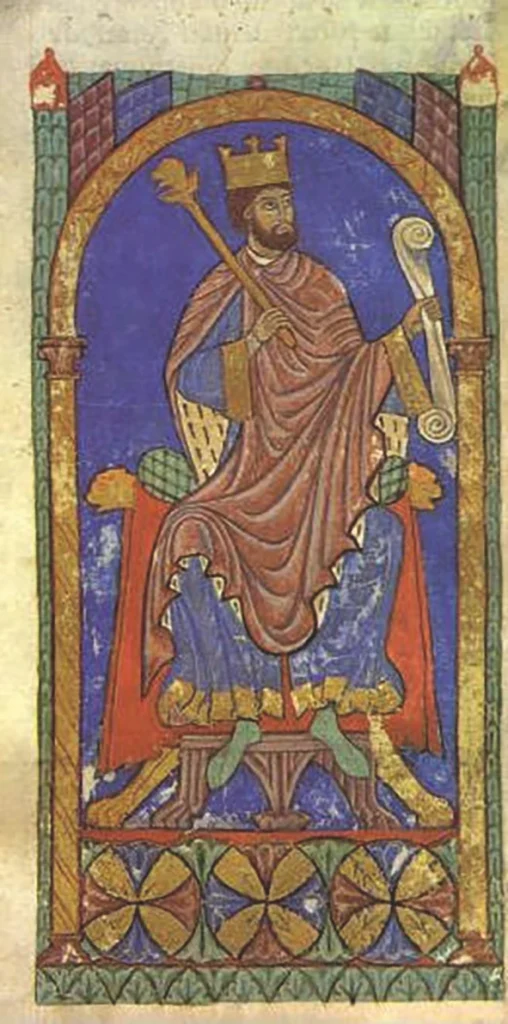
The most visible figure of this group of nobles was Pedro Froilaz, also known as the Count of Traba, who was educated in the court of king Alfonso VI where he gained the trust of Raymond of Burgundy, son-in-law of the king and father of Alfonso Reimúndez, the future king Alfonso VII, who as an infant under the protection of Pedro (he spent part of his childhood in the monastery of Moraime). Pedro also defended Alfonso’s rights to the throne and, with the support of the archbishop of Santiago Diego Xelmírez, the prince was crowned king of Galicia in 1111 with the title Alfonso VII. After the death of his mother Urraca (1126), he also became king of Leon and then Castile.
The links between the Traba family and Costa da Morte also led to closer relationships between the region and the monarchy and the church in Santiago. In acknowledgement of the hospitality shown by the monks of Moaraime, Alfonso VII granted extensive hunting lands to the monastery in 1119. In the same century, Count Pedro also donated several churches he owned in Nemancos to the archbishopric of Santiago. The leading role of the Traba family in Costa da Morte in the 10th and 11th centuries CE can be seen in their participation in the founding of several small monasteries in the region, such as San Xulián de Moraime (Muxía), Santiago de Mens (Malpica), San Mamede de Seavia (Coristanco) and San Xoán de Borneiro (Cabana de Bergantiños). There were others in Nemancos, Soneira and Bergantiños: San Martiño de Ozón (Muxía), San Antolín de Baíñas (Vimianzo), Santa María de Cabo Tosto (Xaviña, Camariñas), San Vicente da Graña (Ponteceso), San Martiño de Canduas (Cabana de Bergantiños), Santo Tomé de Nemeño (Ponteceso) and San Pedro de Soandres (A Laracha). Almost all of them were founded by the family, although their origins are unknown. Some of them were very old, dating back to the 9th and 10th centuries, although many were established in the 11th c., and reached their moments of maximum splendour in the 12th c.
The most important monasteries in the region were San Xulián de Moraime, in Terra de Nemancos, and San Pedro de Soandres, on the eastern edge of the region of Bergantiños. The monastery of Moraime may have been founded in the 11th c. (the earliest document referring to the monastery dates back to 1095). Some researchers believe that it may have been founded by the Trabas, since several members of the family were the first benefactors of the monastery, and it also received royal privileges and donations. One particularly notable gift was given by Alfonso VII for the rebuilding of the monastery buildings destroyed by Muslim pirates, in acknowledgement of the time he had spent as a child under the care of the monks and local people.
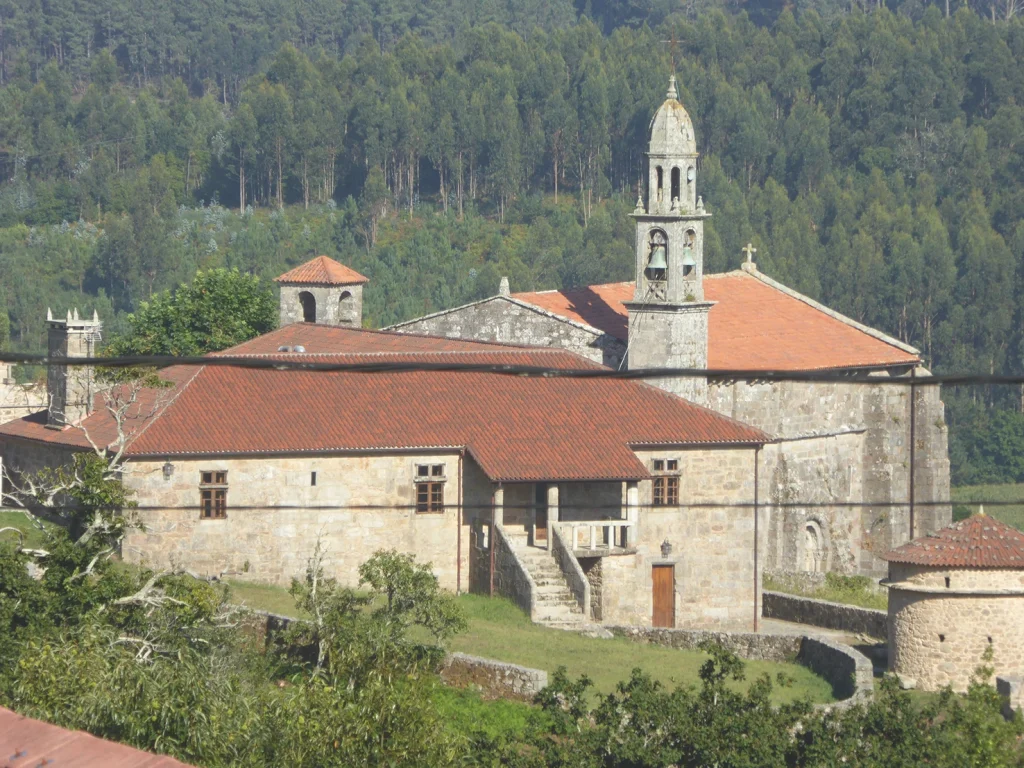
Constant harassment by the local nobility in the 12th c., who took over parts of the monastery lands and revenues, led to its gradual downfall. In 1499 it went on to form part of the monastery of San Benito de Valladolid, and then changed hands to become part of the community of San Martiño Pinario in Santiago de Compostela in 1633, until the ecclesiastical confiscations of Mendizábal (1835). The properties belonging to the monastery of Moraime extended throughout the region of Nemancos, along with other properties in Xallas, Soneira and Bergantiños. It also obtained revenues from the patronage of twenty parishes distributed throughout Costa da Morte.
Remains of this important monastery include the magnificent church of San Xulián, the best example of Romanesque architecture in the entire region and the rectory, converted into a pilgrims’ hostel. Both buildings bear the coat of arms of San Martiño Pinario.
The monastery of San Pedro de Soandres also played an important role in the northern areas of Costa da Morte, and its influence extended to the municipalities of A Laracha, Cerceda and Carballo. The date of its founding is also unknown. The oldest documents that mention the monastery are from the mid-10th century, but there may have been a previous religious congregation, even in the Roman period, since an altar dedicated to Jupiter was found there. From the 14th century onwards, it was constantly harassed by the local nobility and their supporters, who plotted to take ownership of its lands and revenues; one particularly rapacious family was the Mariñas, owners of the towers of Cillobre (A Laracha). In 1499, it was turned into a priory and was handed over to San Martiño Pinario.
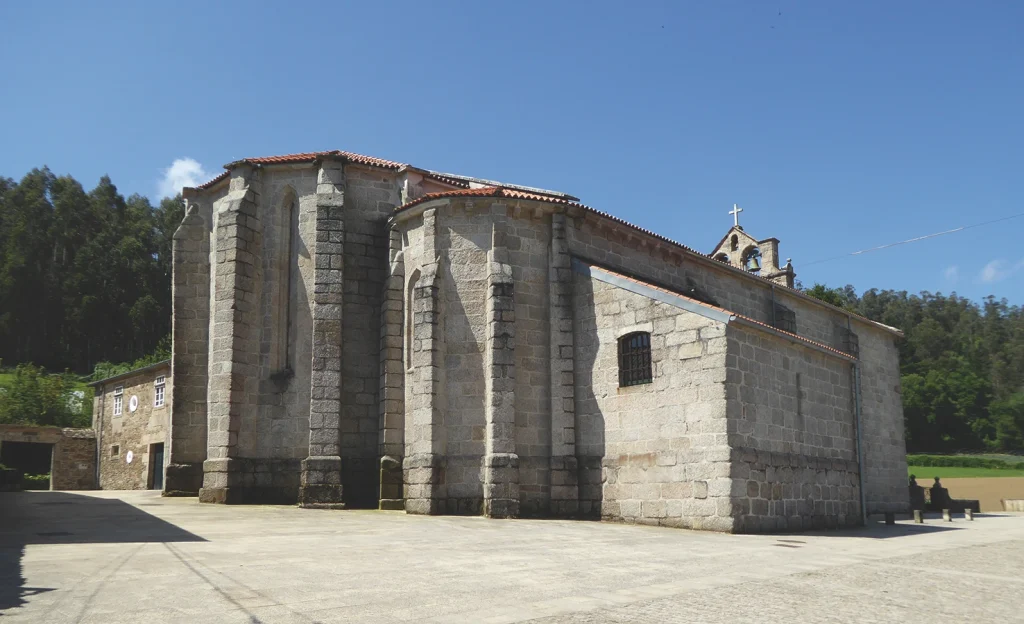
The most interesting architectural feature of Soandres is the Gothic church sanctuary, while the rest of the church is built in the Baroque style. The rectory is attached to the southern side of the church and was built in the 18th c., but it conserves the shape of the old monastery with the cloister.
In the Middle Ages, attacks by Norman and Muslim pirates were a constant threat for religious communities and local populations near the coast, who were forced to seek refuge further inland in some periods of the year. Piracy would explain the low population of the coast in the middle centuries of the Middle Ages and the construction of the first parish churches away from the coast to avoid pillaging. Examples of these are San Andrés da Canle (Corcubión), San Paio de Refoxos (Cee), San Xurxo de Buría (Camariñas), San Pedro do Porto (Camariñas), Santo Adrián de Corme Aldea (Ponteceso) and Santa María de Caión (A Laracha). Several fortresses were built to watch out for and protect local people from pirates, such as San Xurxo, on the west slope of Monte Pindo, and the tower at Canedo in San Mamede de Carnota.
After the end of the Almoravid empire in the 13th century and the increased control by Christian kingdoms of the coasts on the south of the peninsula, there was a reduction in piracy, which opened the way to trade between Italian merchantmen and Flanders. This change brought about an increase in trade on the Galician coast, as some vessels stopped off to replenish at some of the natural harbours in the region and also took the opportunity to sell their goods. This commercial activity, combined with an increase in fishing, attracted the population towards the coast, which led to the establishment of the coastal towns of Fisterra, Corcubión, Cee, Muxía, Camariñas, Laxe, Corme and Malpica.
The new towns attracted the interest of the clergy in Santiago and the lay nobility, who both planned to take economic control of the new coastal settlements. The archbishop of Santiago took possession of the ports of Fisterra, Muxía and Malpica, while the Moscoso de Altamira went on to take control of Corcubión, Camariñas and Laxe. The town of Cee was owned by the archdeacon of Trastámara, where he had his residence.
The Traba family, who had been a force to be reckoned with in Costa da Morte and other parts of Galicia in the 11th and 12th centuries, began to lose much of their power in the following years, and other lineages began to take their place, many of which were linked to Pedro Froilaz, whose two marriages had created a line of powerful descendants. This branch of the Trabas became the root of the new Galician nobility: the Mariños, Moscosos, Mantaos, Andrades and Mariñas. The first two families had close ties to Costa da Morte. The Mariños were the first to take possession of a sizeable part of the region, starting with the donation made by king Sancho IV to Martín Eáns Mariño of the parishes of Santa María de Fisterra and San Vicenzo de Duio in the late 13th century. When they married into the branches of the Soga and Lobeira families, their influence extended to many other parts of Galicia. The family would fall into disgrace at the end of the 13th century due to problems between family members and also because of debts with the crown, to the point where Rui Soga de Lobeira, one of its most notable figures, was imprisoned and later beheaded in the town of Noia (1393).
The power and influence of the Mariños in the area of Santiago and Costa da Morte passed to the Moscoso de Altamira, another powerful family in the region. They gradually took power by occupying ecclesiastical and lay posts, first in Santiago and then in Costa da Morte. Their dominion led to a confrontation with the archbishop of Santiago, as they both had economic interests in the same geographical area. The conflicts between both parties were frequent in the 15th century. An example is an assault by a squadron of the supporters of archbishop Rodrigo de Luna on the port of Corcubión, which was owned by the Moscosos at the time.
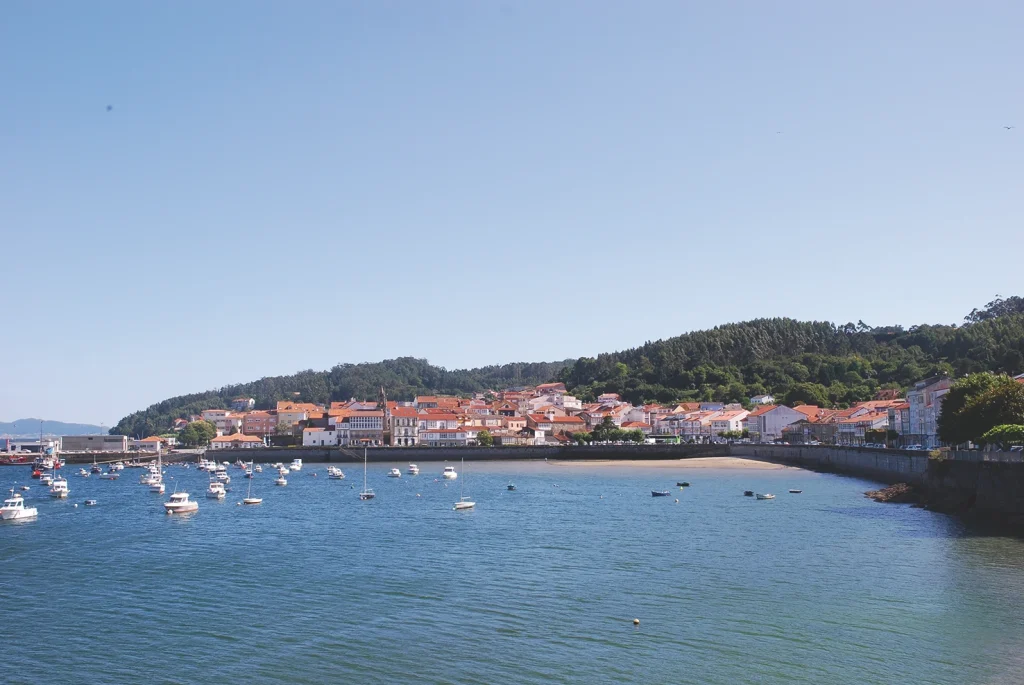
Much of the wealth of the new lay nobility came from abuses of power taken against the properties of the monasteries through the usurpation of revenues or land. Despite the repeated complaints sent by the abbots or priors to the kings to put a halt to these abusive practices, little was done and most complaints were ignored. The dynasty of the Trastámaras favoured this type of conflict, which permitted the nobility to act with complete freedom. The Moscosos took a lot of advantage of these abuses of power, as was the case with the monastery of Moraime, while other nobles such as the Mariñas also took the same approach with the monks of the monastery of Soandres. The growing power of this rapacious nobility was such that it began to take possession of property owned by the archbishop, and even crown property was not exempt. The Moscosos went so far as to collect taxes by force, including the alcabala (royal sales tax) in the towns of Cee, Muxía and Fisterra, which were owned by the Church.

The violent and abusive attitude of the nobility created a confrontation with the Church and with the monarchy, and even with the nobles’ own vassals, and became the main cause behind the Irmandiño revolts, which rebelled against the hostile nobles in the king’s name. This social revolt of 1467 was also supported by some minor nobles and extended throughout Galicia. It had a particularly strong effect on Costa da Morte, where several castles at Vimianzo, Mens, A Penela and Ferreira were destroyed. However, the rebellion only lasted two years; the nobles who had fled returned and organised a counter attack with the king’s support to recover their lands and castles.
The rise to power of the Catholic Monarchs also led to greater control over the nobility and some of them were obliged to appear at court, thus keeping them away from their lands. The autonomy of the monasteries also disappeared under the new monarchs. The smallest passed into the hands of the large parishes who were in turn controlled by the monastery of San Benito in Valladolid.